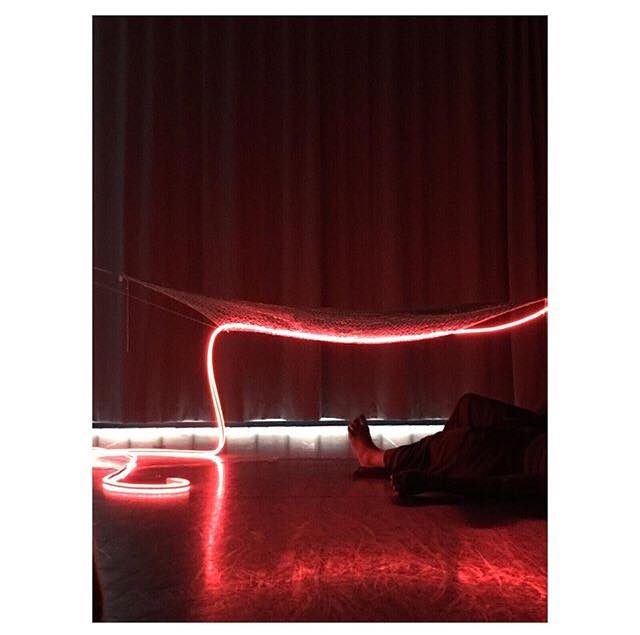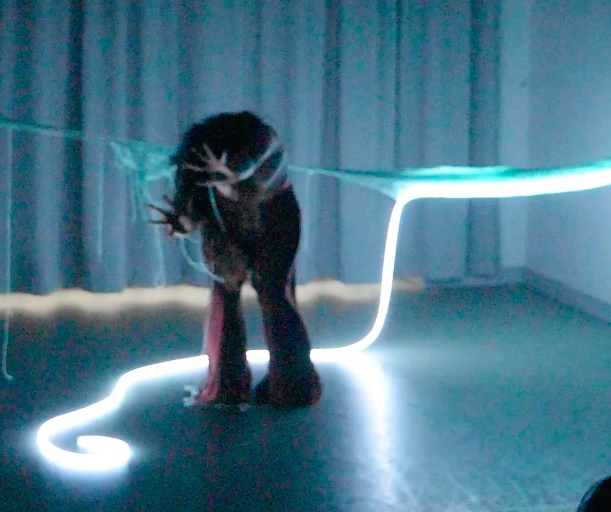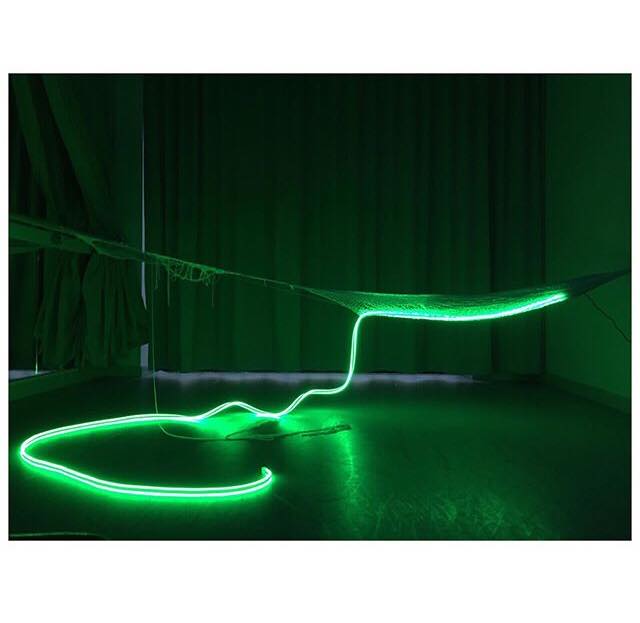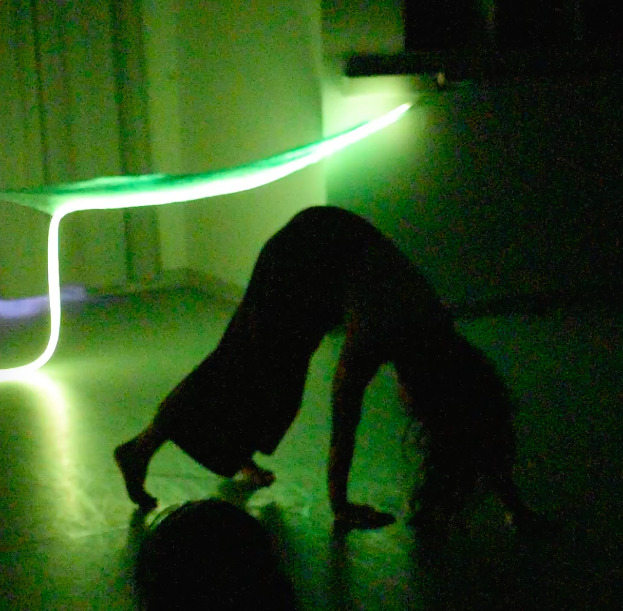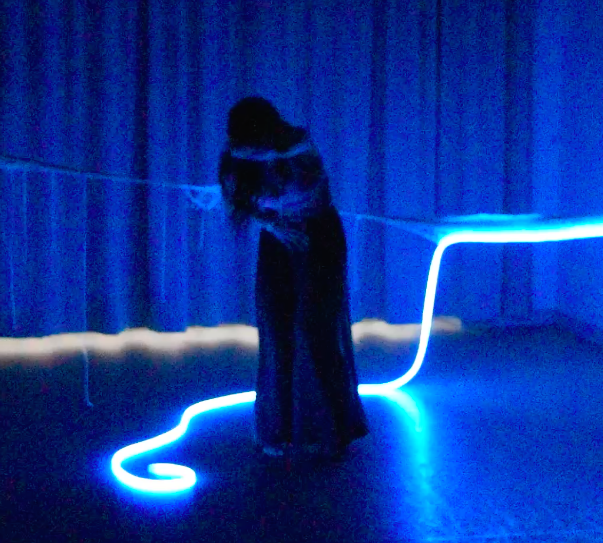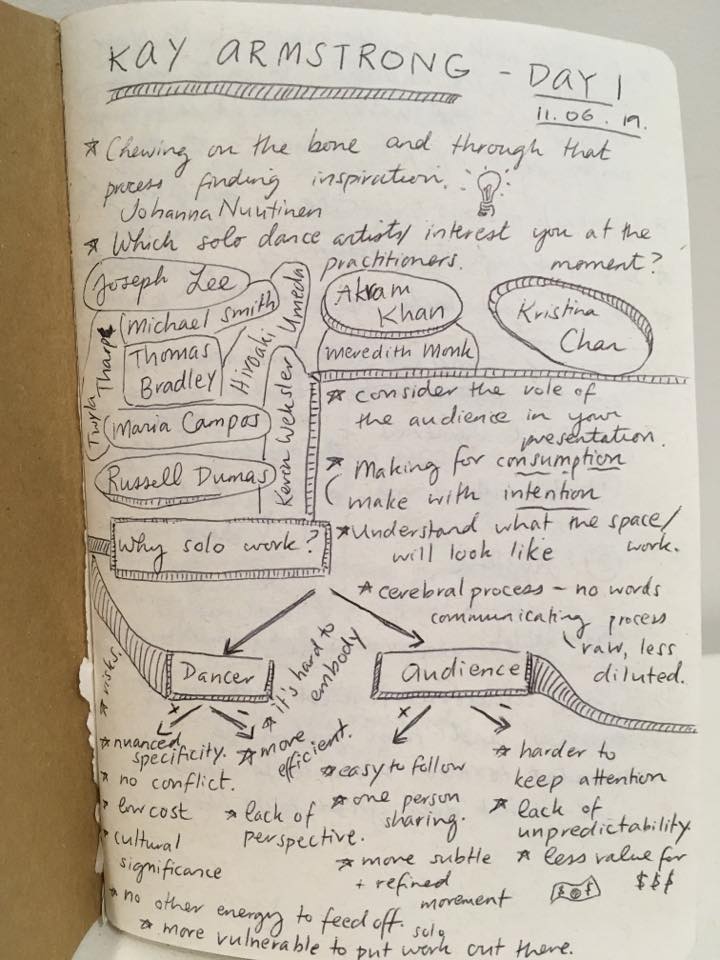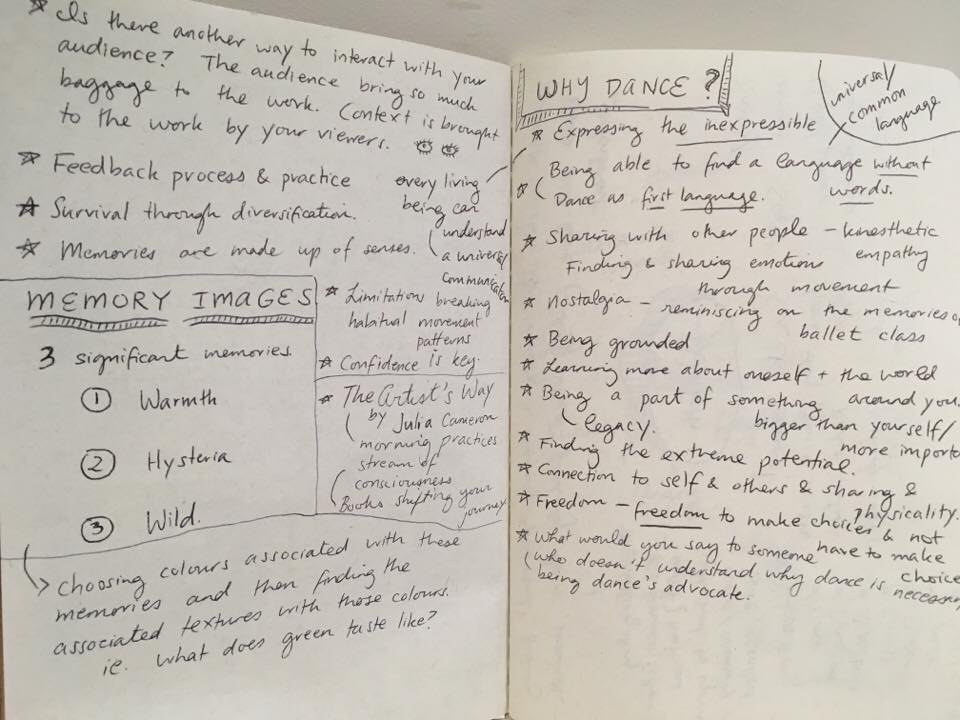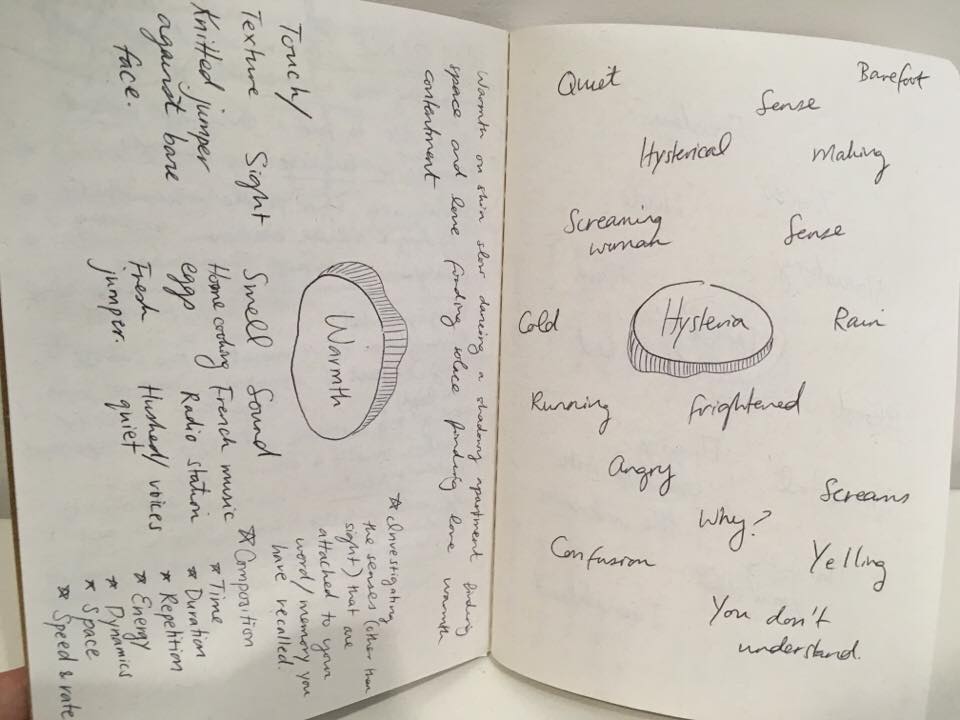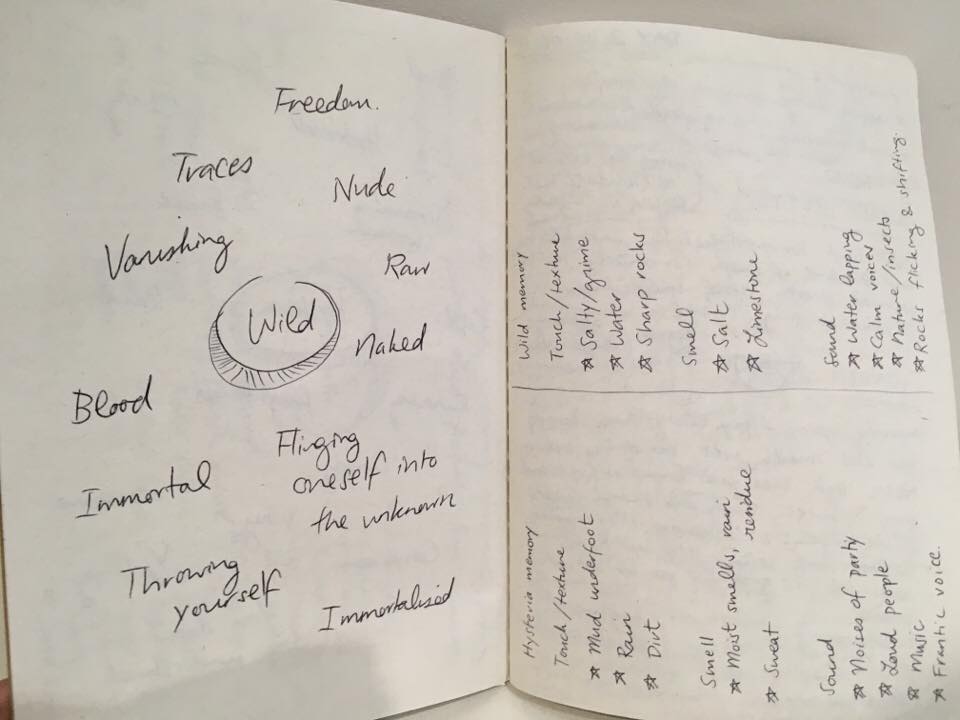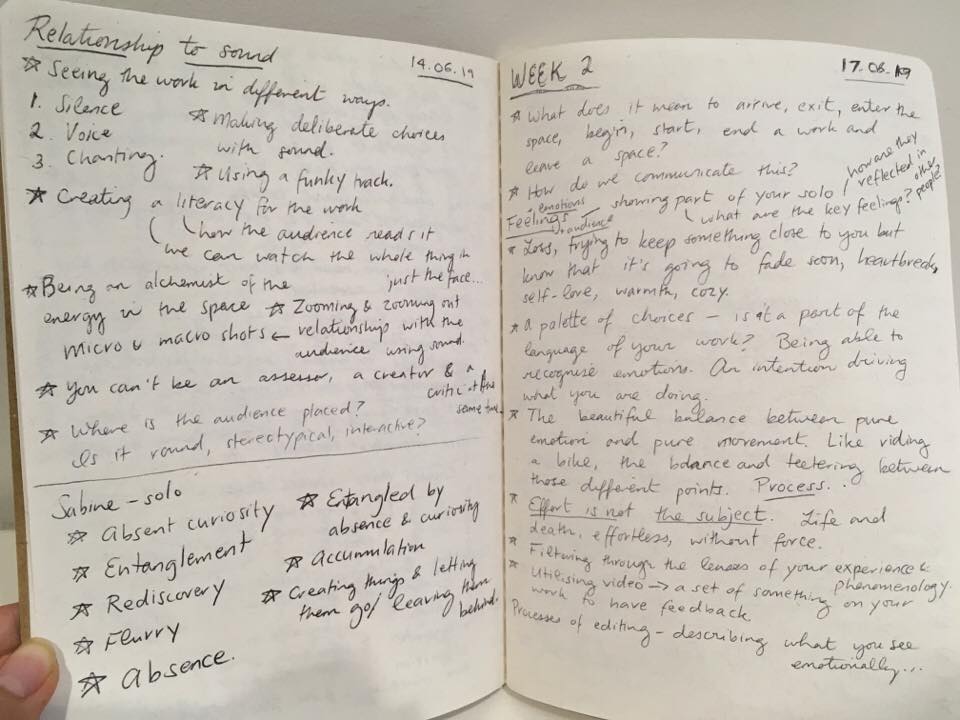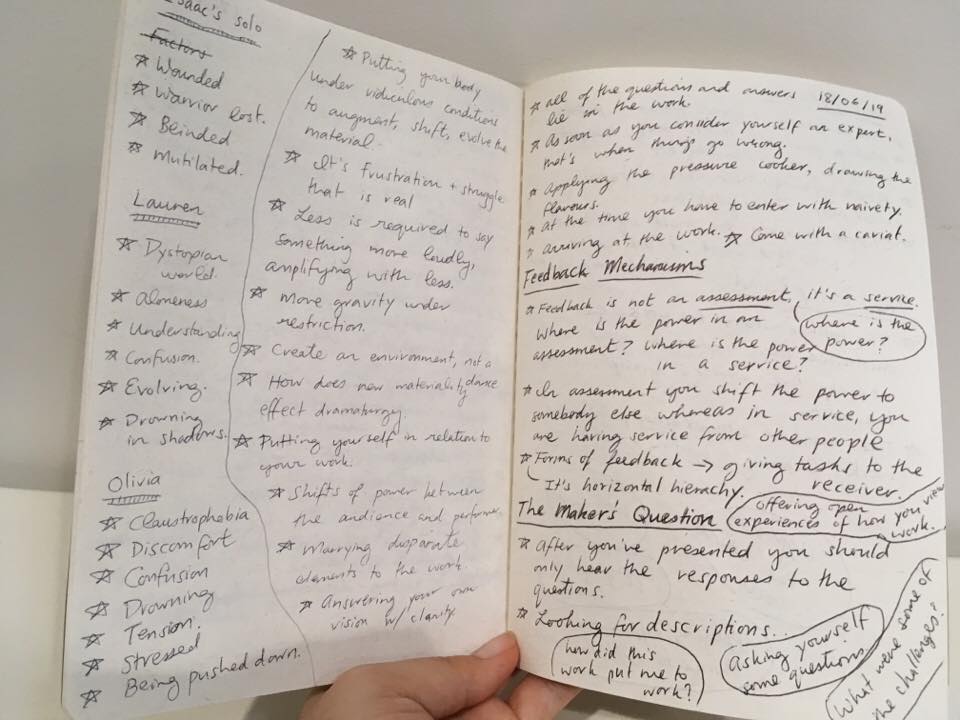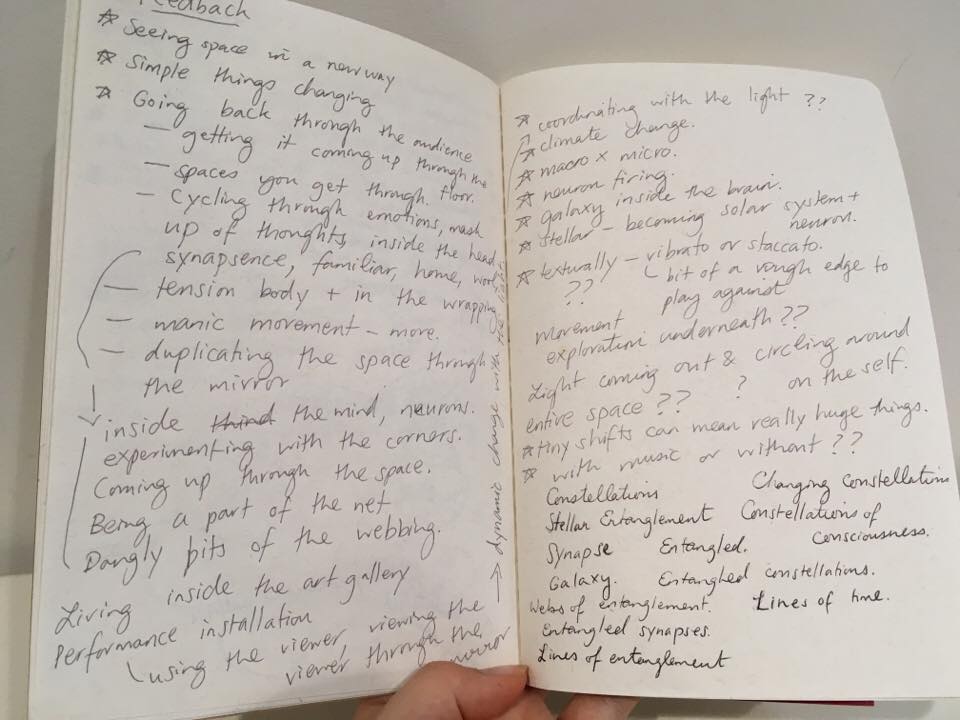Takeuchi, R. (2019), Constellations (As It Fades) [glow in the dark yarn, LED light]. QUT Frank Moran Gallery, QLD, Australia.
Light, passing time, memory, loss and rebirth - what makes up the galaxy of your mind? I began the solo development process creating movement material from personal memory and by taking inspiration from the simplicity of Nature - the entangled branches and spider cobwebs, in particular. I wanted to draw on these different lines of ideas, considering them as constellations of human emotions, consciousness and experience. The resultant sculptural, performance installation has become a somatic contemplation for me and I hope to explore the potential for this sensitivity to be shared with the viewer.
In Constellations of Thought (As It Fades) I’m combining an installation using glow-in-the-dark yarn and lighting with my solo practice that I’ve been developing with dance practitioner Kay Armstrong. I have been very interested in working with light and ephemeral works that are constantly in flux - all of these materials as metaphors for time and space. I wanted to play with the idea of refractions of light – how lighting changes and impacts what one can see. I wanted to activate primal senses through darkness and examine what it means to see small residues of the body in darkness.
In the documentation of this webbed sculpture I’ve been thinking about wrapping, moving and reacting. How can the spectators navigate the space? When the spectators negotiate the space, I’m anticipating the space being dark - the spectators will have to map the space for themselves.
The work has been influenced by artists such as Tomas Saraceno, Ken Yonetani, Marina Abramovic and Ryoji Akita with Forsythe.
My primary questions in assembling my new performance installation work are:
How can choreographic play enliven agency?
How do you facilitate someone's agency through a process of decontamination and entering a work?
What does it mean to move through the threshold between passive spectatorship into enlivened and performative spectatorship? What is it to go into this space? To pass through the threshold?
When disrupting the expectation of a ‘critique situation’, does it alienate the viewer's experience, or add a layer of curiosity?
See pictures below for process shots of installation documentation:
The images above are documentation of my choreographic journal documenting the process of development under Kay Armstrong which took place over three weeks.
